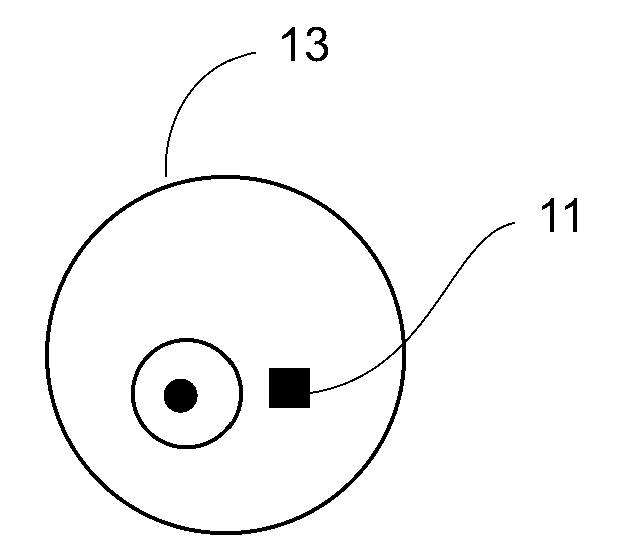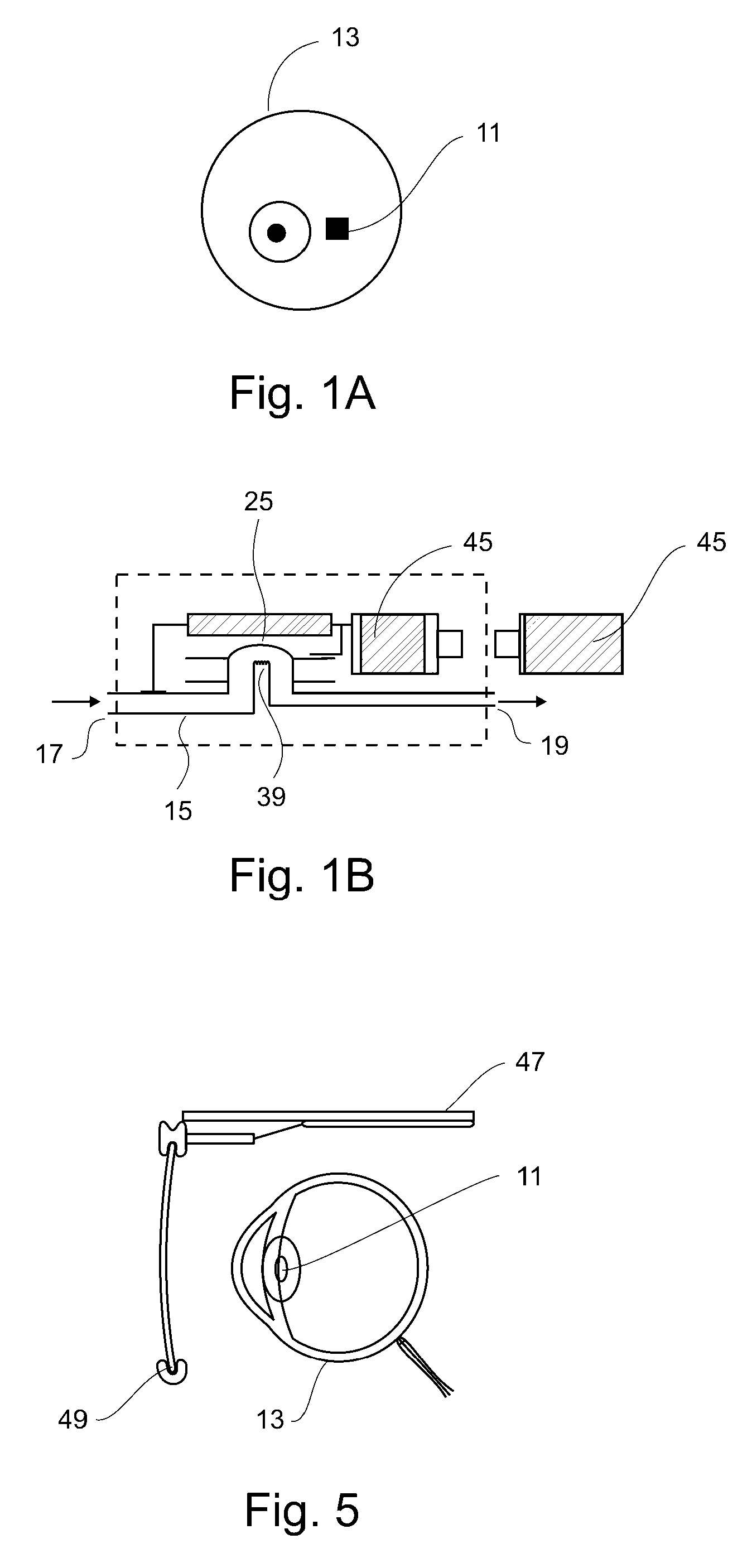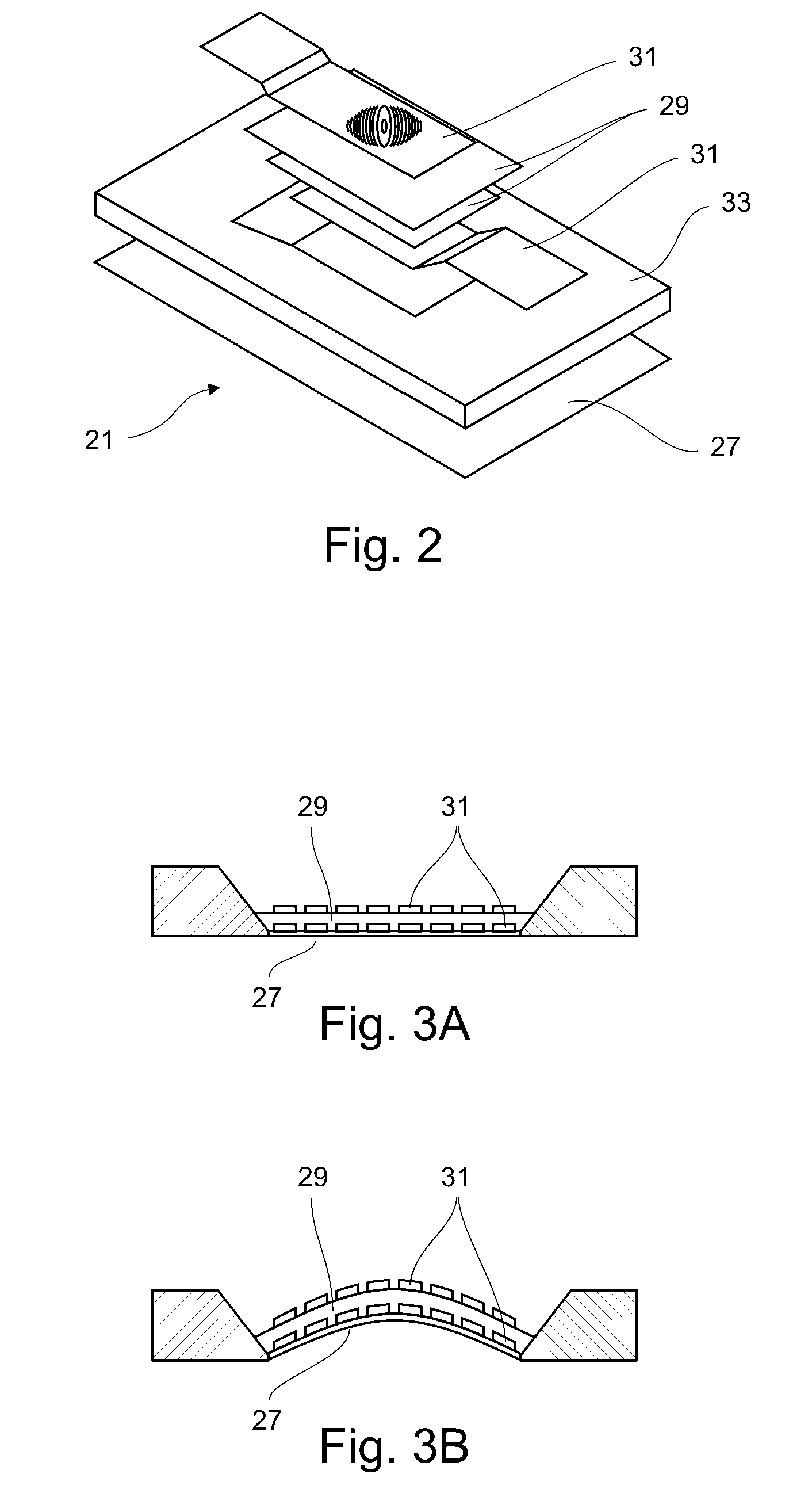Implantable ocular microapparatus to ameliorate glaucoma or an ocular overpressure causing disease
a microapparatus and ocular technology, applied in the field of opthalmologic surgery, can solve the problems of insufficient size, inability to optimize or turn, and high resistance to flow, and achieve the effect of minimizing power consumption and little current consumption
- Summary
- Abstract
- Description
- Claims
- Application Information
AI Technical Summary
Benefits of technology
Problems solved by technology
Method used
Image
Examples
Embodiment Construction
[0040]FIG. 1A shows schematically the different blocks comprising the microapparatus 11 of the present invention, which is surgically implanted to detect and correct glaucoma in an eye 13 and in FIG. 1B the different blocks that conform the microapparatus 11. The microapparatus 11 uses a silicon rubber tube 15 which inlet end 17 is implanted in fluid communication with the aqueous humor in the ocular globe 13, more specifically in the sclera, a few millimeters from the corneal limb. The discharge end 19 may be free so that the drained fluid is absorbed by surrounding tissue.
[0041]Around the drainage end 19 of conduit 15 there is a valve comprised by a membrane made of dielectric material disposed as a diaphragm 21 that normally (i.e. under normal pressure in the eye 13) closes tube 15. At a middle portion of the drainage tube 15 there is a sensor membrane 23 made of electro conductor material which ohmic resistance varies with the deformation the membrane 23 is subjected to by the p...
PUM
 Login to View More
Login to View More Abstract
Description
Claims
Application Information
 Login to View More
Login to View More - R&D
- Intellectual Property
- Life Sciences
- Materials
- Tech Scout
- Unparalleled Data Quality
- Higher Quality Content
- 60% Fewer Hallucinations
Browse by: Latest US Patents, China's latest patents, Technical Efficacy Thesaurus, Application Domain, Technology Topic, Popular Technical Reports.
© 2025 PatSnap. All rights reserved.Legal|Privacy policy|Modern Slavery Act Transparency Statement|Sitemap|About US| Contact US: help@patsnap.com



